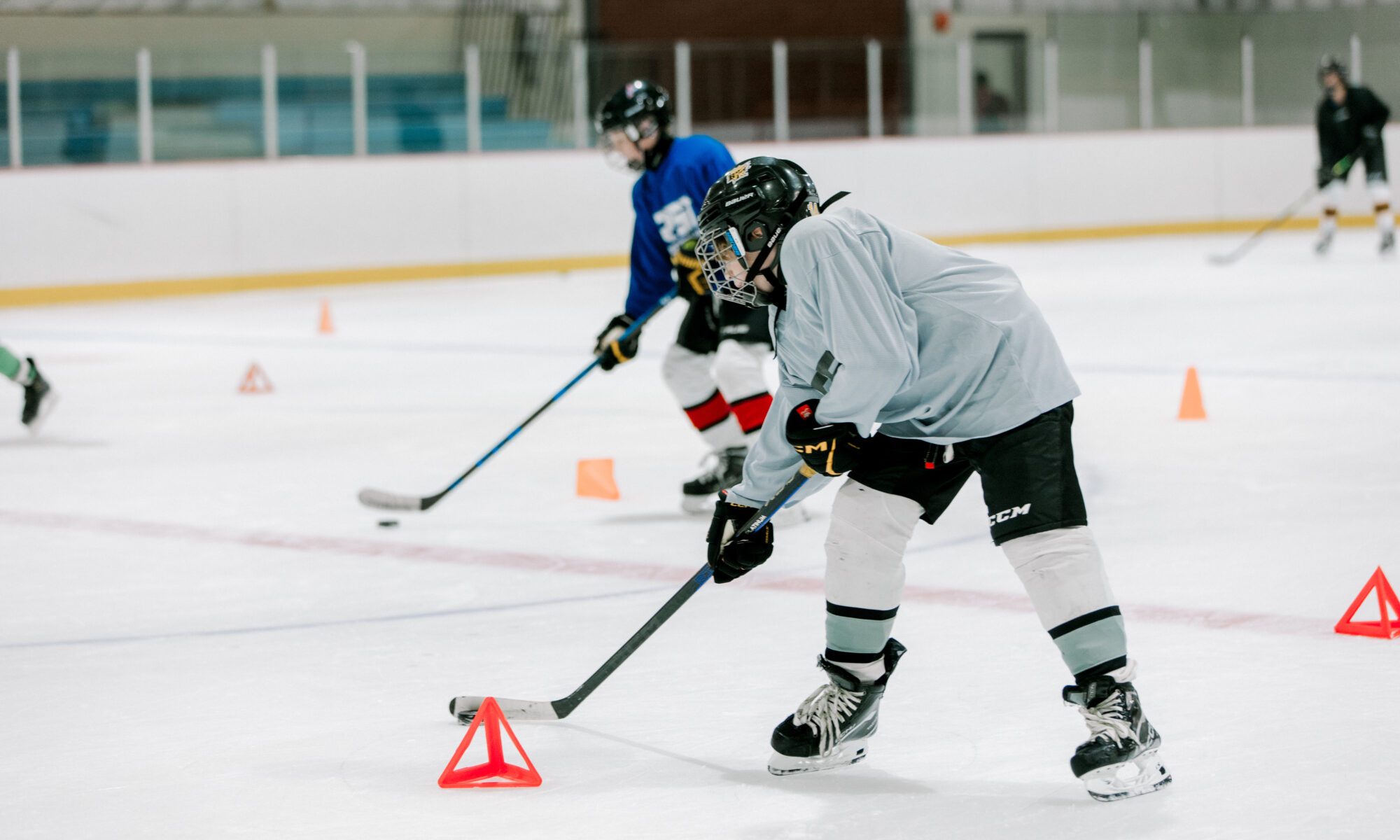In today’s hockey world, coaches are constantly juggling between team practice and skills sessions. The lines between the two seem to be blurry as coaches bring out pylons and danglers during team practices, while players have access to individual skill coaches outside of team activities.
This raises an important question: are coaches misunderstanding the importance of team play in this new generation of highly skilled players? It seems that there may be a focus on individual skills rather than incorporating them into team strategies during practices.
As players progress into their teenage years and face tighter competition, passing and creating offensive opportunities become crucial, yet seem to suffer the most. So, what are the differences between a team practice and skills session, and how can coaches strike a balance between developing individual skills and fostering team dynamics?
Team Practice vs. Skills Sessions
Team practices and skills sessions stand as the twin pillars of hockey development, each with its distinct focus and objectives. Team practices emphasize strategy, teamwork, and the execution of group tactics. These sessions are about the bigger picture, laying the groundwork for how players will work together on the ice to achieve their common goals.
Conversely, skills sessions dive deep into personal development, targeting specific areas such as puck control, accurate shooting, and enhanced skating techniques. This is the time for players to focus on refining their individual abilities, often through repetitive drills and personalized coaching. The delineation between these two types of practices has traditionally been clear, but as hockey evolves, so does the methodology behind player and team development.
The challenge now lies in how to leverage the unique benefits of each, ensuring that players not only grow in their individual capacities but also understand how to synchronize their improved skills with the team’s strategies and objectives. This approach demands a delicate balance, acknowledging the importance of both individual skill and team synergy in the modern game of hockey.
Team Practice’s
In the world of competitive hockey, team practices can vary widely, yet some effective models have emerged. For example, a team may dedicate portions of their practice to power play and penalty kill scenarios, dividing the squad to focus on these specialized team roles.
Another common approach includes full-ice scrimmages that emphasize real-game tempo and decision-making, with coaches pausing the action to discuss positioning and strategy. Defensive zone breakouts and neutral zone regroups are also focal points, with drills designed to improve the team’s ability to transition from defense to offense efficiently.
Some practices incorporate a ‘stations’ approach, where players rotate through different drills, each emphasizing a key team concept such as forechecking, backchecking, or faceoff strategies. This method ensures players receive concentrated instruction on various aspects of team play, fostering a well-rounded understanding of the game. These examples highlight the adaptability of team practices to focus on collective goals, ensuring each player understands their role within the team’s overarching strategy.
How To Run A Skills Session
Running an effective skills session requires a focused approach that zeroes in on individual player development. To start, a coach should assess the specific needs of each player, tailoring drills that target their areas for improvement, such as stickhandling, shooting accuracy, or skating agility.
Incorporating technology, like video analysis or sensor-equipped pucks and sticks, can offer immediate feedback, allowing for more precise adjustments to technique. Each drill should be designed with progression in mind, starting from basic skills and gradually increasing in complexity and intensity.
This ensures that players are constantly challenged but not overwhelmed, fostering an environment of continuous improvement. Additionally, coaches should encourage a mindset of self-evaluation among players, prompting them to think critically about their performance and areas for growth.
A skills session can be powerful in a player’s development toolbox by maintaining a structured yet adaptable approach, helping set the stage for their transition from practice to game-ready performance.
Understanding How Individual Skill Is Applied In A Team Atmosphere
Achieving a successful blend of individual skill development with team strategy is an art in modern hockey coaching. It demands an approach that transcends traditional training boundaries, creating a dynamic showing how personal skill supports and enhances collective goals.
By incorporating drills that simulate the unpredictability and pressure of real-game situations, coaches can encourage players to apply their refined abilities in a team context. This includes engaging in small-area games that foster quick decision-making and highlight the importance of awareness, critical for effective team play.
Additionally, emphasizing situational drills that mirror actual game scenarios helps players understand the application of their skills in various contexts, from defensive positioning to offensive setups. It’s about crafting an environment where individual talents are not just celebrated but are seen as integral pieces of the team’s success puzzle.
This strategic blending cultivates a squad adept at translating personal achievements into team victories, ensuring that the development of skills goes hand-in-hand with the progression of team dynamics, ultimately creating a cohesive unit ready to face the challenges of competitive hockey.
The Hybrid: Teams That Got It Right
Across youth and professional hockey leagues, teams that have adeptly combined individual skills sessions with cohesive team strategies showcase the powerful impact of this approach. A standout example is a youth team that incorporated puck-handling drills into tight, team-oriented offensive plays, significantly enhancing their creative playmaking on the ice.
This method not only improved the individual skill set of each player but also fostered a sense of unity and purpose within the team context. Similarly, professional teams have adopted a novel approach by integrating a 30-minute skills session prior to a standard practice.
This pre-practice session focuses on refining individual techniques, followed by a flood and a 50-minute team practice. This structure ensures that players are primed with sharpened skills, which they can then apply in team drills and strategies.
The success of these teams underscores the value of merging individual development with team dynamics, illustrating a blueprint for cultivating well-rounded, high-performing hockey squads.

